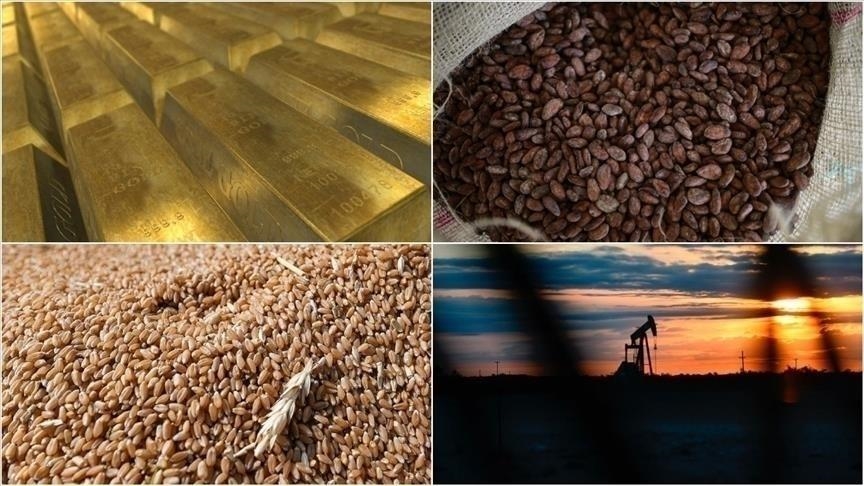ISTANBUL
Commodity markets saw sharp hikes last week, as expectations that the Fed will cut its interest rates in the first half of the year strengthened, and macroeconomic data released in China revealed that demand increased.
Fed Chairman Jerome Powell said in a recent statement that the bank is “not far” from the confidence necessary to loosen monetary policy, which influenced commodity prices.
Meanwhile, nonfarm payroll employment in the US rose by 275,000 in February.
As for the unemployment rate, the figure rose from 3.7% to a two-year high of 3.9%.
The average hourly earnings in the country also recorded its lowest increase since February 2022, with 0.1%.
The rise in the unemployment rate and the slowdown in earnings supported the possibility that the Fed could start cutting interest rates in the first half of the year despite the higher-than-expected hike in unemployment, analysts say.
China’s foreign trade data revealed that demand in the commodity markets increased, as the country’s exports climbed 7.1% and imports 3.5% year-on-year, exceeding estimates.
Price of gold reaches historic high
Powell’s “dovish” statements and the US employment data supported the upward demand for gold, analysts say.
The World Platinum Investment Council announced on March 6 that the global platinum deficit will be “deeper than expected,” causing a surge in platinum prices.
In light of these developments, the ounce price of gold hit a record high of $2,195 last week, up 4.6%, and at the same time, silver hiked 4.9%, platinum 2.6%, and palladium 6.7%.
Brent crude oil prices fell pursuant to the data revealing decreased demand in the US.
The commercial crude oil stocks in the US went up by about 1.4 million barrels compared to the previous week to 448.5 million barrels, according to data from the US Energy Information Administration (EIA).
However, market expectations were that stocks would climb by 423,000 barrels.
Temperatures above seasonal levels in the US, and the excess supply of natural gas affected natural gas prices negatively.
Given these changes, Brent crude oil fell 2%, and natural gas traded on the New York Mercantile Exchange 1.4%.
Copper prices increase, while aluminum remains flat
News that Chinese copper smelters will reduce production fueled supply concerns.
The country’s total unprocessed copper imports posted upticks, indicating an increase in demand.
Nickel prices rose on news that an Indonesian nickel producer applied for its nickel to be listed as a delivery brand on the London Metal Exchange.
Signs of tightening supply and rising demand for zinc in China positively impacted zinc prices.
South Korea’s Young Poong Corp reduced refined zinc production at its Seokpo facility, according to a report, which supported zinc prices upwards.
Considering these updates, copper rose 0.8%, lead 3.4%, nickel 2%, zinc 3.8%, whereas aluminum remained flat.
Cocoa prices hit record high
Wheat prices were negatively impacted by the cheap price of Russian wheat and the news that China may cancel some wheat purchases from the US.
Meanwhile, increased soybean exports in Brazil revealed the growing demand.
In view of this news, the price of wheat and rice traded on the Chicago Mercantile Exchange fell 3.5% and 3.9%, respectively, whereas corn hiked 3.5%, and soybeans 2.9%.
The price of wheat hit its lowest level since August 2020, priced at $5.26.
As for the price of cotton traded on the Intercontinental Exchange, it decreased 0.3%, while cocoa rose 1.1% to a record high of $6,667, coffee climbed 1%, and sugar 0.4%.

